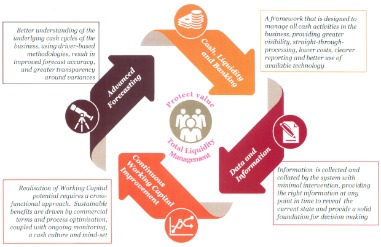
The only time the two will likely match is if there’s no activity on the account. This process plays a crucial role in ensuring that the recorded transactions align with the actual activity in the bank account. By marking transactions as cleared, it becomes easier to track which ones have been verified by the bank, minimizing the risk of overlooking any discrepancies.

Access the Reconcile Tool
Enter any bank service fees transactions into the “Service charge” field and then select the date and the account used to track bank service fees from the adjacent “Date” and “Expense account” drop-downs. To enter interest earned, type the amount of interest earned into the “Interest earned” field. Then select the date and the income account used to track interest income, from the adjacent “Date” and “Income account” drop-downs. To reconcile the account after entering the statement information, click the “Start reconciling” button at the bottom of the window. Even small business accountants appreciate the automated reconciliation feature in QuickBooks Online that can have your accounts reconciled in minutes, not hours.
- You should reconcile your bank and credit card accounts in QuickBooks frequently to make sure they match your real-life bank accounts.
- While connecting your bank account directly to an accounting software application such as QuickBooks Online makes it easier to track and match transactions, you still need to complete the reconciliation process.
- It needs to match the balance of your real-life bank account for the day you decided to start tracking transactions in QuickBooks.
How to do a reconciliation with QuickBooks Online
It can also help with account audits and tax preparation by catching errors early. You can then select Start reconciling to begin the reconciliation of each transaction in that account. It aids in identifying any potential errors or fraudulent activities, thereby contributing to the overall financial integrity of the organization. With its ability to integrate seamlessly into QuickBooks, reconciliation streamlines the financial management process, ensuring compliance and transparency.
After verifying the transactions and ensuring their alignment with the bank statement, QuickBooks Online allows users to mark the reconciliation as complete. This signifies that all transactions have been examined and matched, providing a clear and accurate representation of the company’s financial position. This process involves comparing the transactions entered into QuickBooks Online with the bank statement to pinpoint any inconsistencies. By meticulously reviewing each transaction, users can detect potential errors such as duplicates, missing entries, or incorrect categorizations. This scrutiny plays a vital role in maintaining accurate financial records, helping businesses to reconcile their accounts with precision. This process is crucial for ensuring that all transactions recorded in the accounting system align with the actual activity in the bank account.
Review Transactions
A few years back, I had checks belonging to someone else clearing in my account for three months in a row. If I hadn’t looked at the checks that were clearing to match them with my transactions, chances are I never would have spotted them. Since all of your transaction info comes directly from your bank, reconciling should be a breeze.
The significance of this phase lies in its ability to identify any discrepancies or errors, providing a clear overview of the company’s financial status. This process is crucial for maintaining accurate financial records and ensuring that there are no discrepancies in the company’s books. It entails reviewing each transaction, comparing it with the corresponding bank statement entry, and making any necessary adjustments to ensure the accuracy of the records. This meticulous process aids in maintaining the integrity of financial data and enables businesses to track their financial health effectively. By cross-referencing the recorded transactions with the bank statement, discrepancies such as missing or duplicate entries can be identified and rectified, ensuring the accuracy of the financial records. This step involves accessing the ‘Reconcile’ feature, selecting the appropriate account, and entering the closing balance provided by the bank.
Reviewing transactions in QuickBooks Online is essential to identify any discrepancies and ensure that the recorded suspense definition and meaning transactions correspond accurately with the bank statement. From accessing the reconcile tool to marking transactions as cleared, we’ve got you covered. We’ll delve into reconciling previous months, rereconciliation, and marking transactions as reconciled in QuickBooks Online. If you’re ready to streamline your reconciliation process and gain a deeper understanding of how to reconcile in QuickBooks, read on to become a reconciliation pro.
This finalization stage is vital for ensuring the accuracy and integrity of the financial data, providing a clear overview of the absolute drywall inc drywall contractor company’s financial position and allowing for informed decision-making. Comparing transactions in QuickBooks with the bank statement is essential to identify any disparities and ensure the accurate alignment of financial records with the official bank records. Gathering the bank statement and transactions is the initial step in reconciling a bank statement in QuickBooks, enabling the comprehensive matching of financial data with the official bank records. Reconciling in QuickBooks Online involves several key steps to ensure that the financial records align with the bank statement and reflect accurate transactional data.
If everything matches, you know your accounts are balanced and accurate. We recommend reconciling your checking, savings, and credit card accounts every month. This process typically begins by obtaining the bank statement and gathering all relevant transaction details from within QuickBooks Desktop. Any discrepancies should be thoroughly investigated and adjusted in QuickBooks to reconcile the balances accurately. Upon confirming the reconciliation, the process concludes, showcasing the financial harmony between the records and the bank statement. This process plays a crucial role in maintaining the integrity of financial data and safeguarding against discrepancies.




